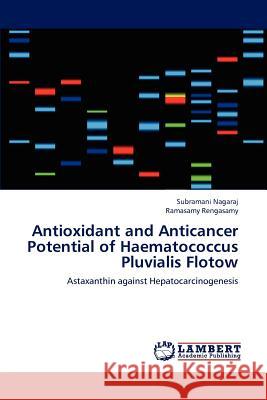Antioxidant and Anticancer Potential of Haematococcus Pluvialis Flotow » książka
Antioxidant and Anticancer Potential of Haematococcus Pluvialis Flotow
ISBN-13: 9783659179747 / Angielski / Miękka / 2012 / 156 str.
Antioxidant and Anticancer Potential of Haematococcus Pluvialis Flotow
ISBN-13: 9783659179747 / Angielski / Miękka / 2012 / 156 str.
(netto: 251,93 VAT: 5%)
Najniższa cena z 30 dni: 264,53
ok. 10-14 dni roboczych
Bez gwarancji dostawy przed świętami
Darmowa dostawa!
The biodiversity of microalgae, being potential producers of a wide spectrum of natural substances of vital human need, microalgae have so far been a rather under explored source in the contemporary development of Biotechnology. Haematococcus pluvialis Flotow is a motile, eukaryotic, unicellular, biflagellate, green, fresh water alga. This alga possesses richest source of astaxanthin and is now cultivated at industrial scale. Astaxanthin is a strong coloring agent and a potent antioxidant of its strong antioxidant activity to target several health conditions. The topic of this book "Antioxidant and Anticancer Potential of Haematococcus pluvialis Flotow" revealed the significance of astaxanthin and its anticancer property against hepatocellular carcinoma (HCC) as strongly evidenced under in vivo and in vitro studies. I take this opportunity to express my deep sense of gratitude to my most respectful supervisor Prof. R. Rengasamy, Director, CAS in Botany, University of Madras who introduced me in the field of Phycology. I earnestly hope that this endeavour will be helpful to the young scientists and also the students alike and act as a stimulus for further research.
The biodiversity of microalgae, being potential producers of a wide spectrum of natural substances of vital human need, microalgae have so far been a rather under explored source in the contemporary development of Biotechnology. Haematococcus pluvialis Flotow is a motile, eukaryotic, unicellular, biflagellate, green, fresh water alga. This alga possesses richest source of astaxanthin and is now cultivated at industrial scale. Astaxanthin is a strong coloring agent and a potent antioxidant of its strong antioxidant activity to target several health conditions. The topic of this book "Antioxidant and Anticancer Potential of Haematococcus pluvialis Flotow" revealed the significance of astaxanthin and its anticancer property against hepatocellular carcinoma (HCC) as strongly evidenced under in vivo and in vitro studies. I take this opportunity to express my deep sense of gratitude to my most respectful supervisor Prof. R. Rengasamy, Director, CAS in Botany, University of Madras who introduced me in the field of Phycology. I earnestly hope that this endeavour will be helpful to the young scientists and also the students alike and act as a stimulus for further research.











